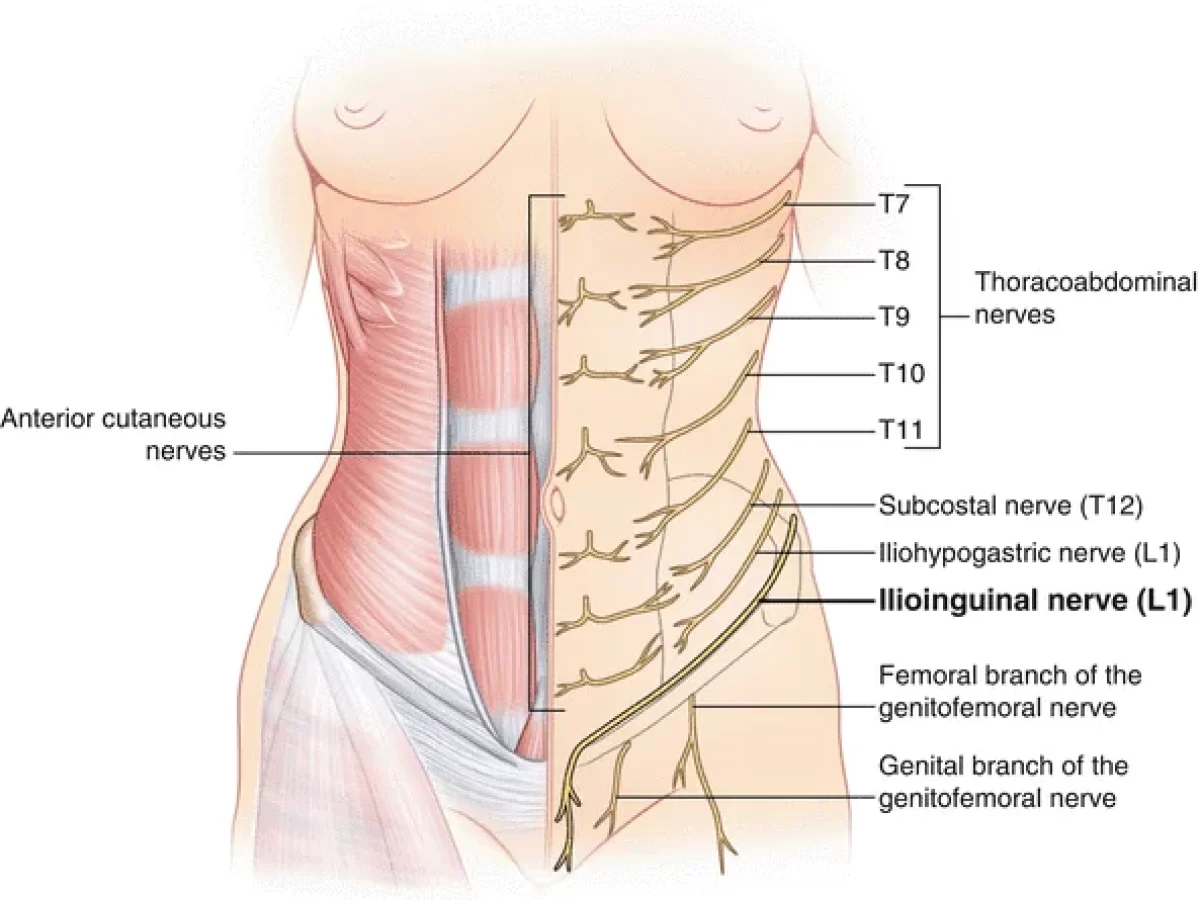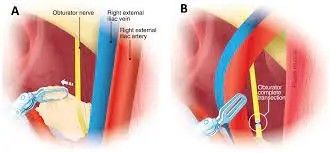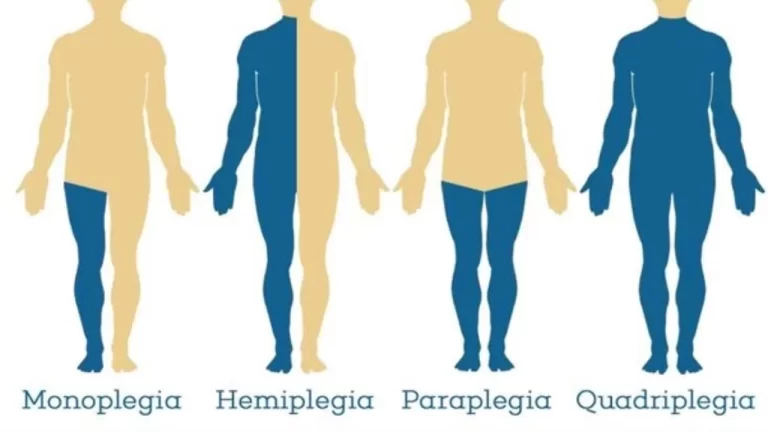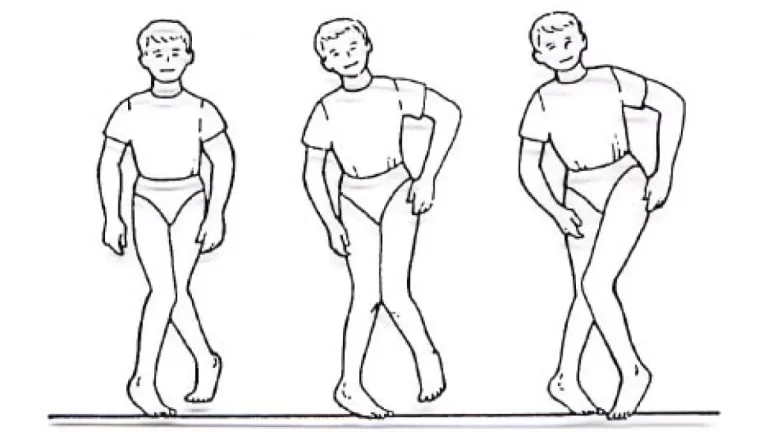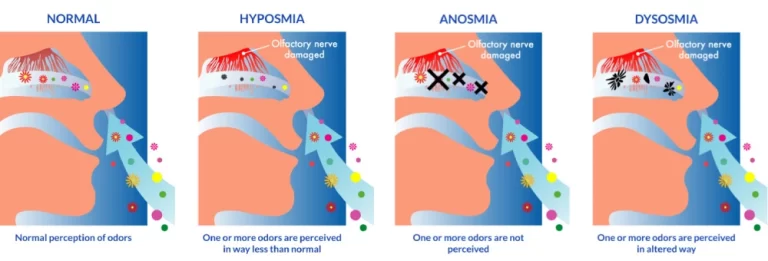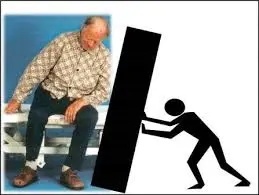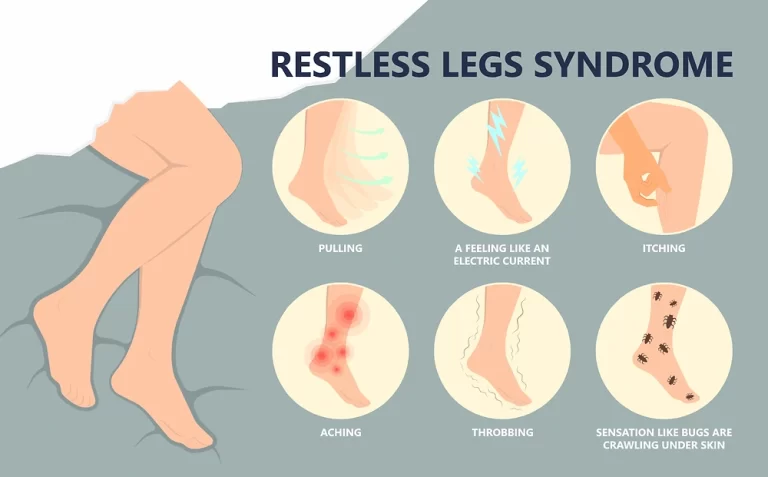Ilioinguinal Neuralgia
Introduction
Ilioinguinal neuralgia is a chronic pain condition that affects the ilioinguinal nerve, which runs from the lower abdomen through the groin. This nerve can become irritated or damaged due to various causes, such as surgery, trauma, or infection.
This nerve feels the lower abdomen and upper thighs by running across them. It can cause a burning, stabbing, or shooting pain in the groin, thigh, abdomen, or genital areas when it is squeezed, irritated, or injured.
Although not often recognized, this illness seriously negatively affects a person’s quality of life. Continue reading this article to learn more about ilioinguinal neuralgia’s symptoms, causes, and treatments.
What is an Ilioinguinal Nerve? Anatomy and its Function
The first lumbar nerve, which runs around the lower back, is the source of the ilioinguinal nerve. It branches out through the second and third abdominal muscles and communicates with the iliohypogastric nerve, which is mostly in charge of controlling the diaphragm, a breathing muscle, and the surrounding tissues.
The ilioinguinal nerve communicates with the upper thigh, pelvis, and anterior abdominal wall. It sends motor branches to the abdominal wall and aids in the sensory innervation of the genitalia and anteromedial thigh.
Anatomy
- The ilioinguinal nerve arises from the lumbar plexus in the posterior abdomen. It is formed by the L1 spinal nerve’s anterior ramus, or division.
- Following its origin, the nerve emerges from the lateral border of the psoas major muscle. Later, it travels inferolaterally and penetrates the abdominal wall around the anterior superior iliac spine.
- The internal oblique and transversus abdominus receive motor branches from the ilioinguinal nerve, which travels through the anterior lateral abdominal wall.
- Once it passes through the superficial inguinal ring and into the intestinal canal, it innervates the skin of the genitalia and anteromedial thigh.
Function
Motor Function
- The ilioinguinal nerve supplies the transverse abdominus and internal oblique muscles of the anterior lateral abdominal wall.
- These muscles can be contracted unilaterally to rotate the torso ipsilaterally, or bilaterally to compress the contents of the abdomen.
Sensory Function
- The skin of the superior anteromedial thigh, which covers the medial portion of the femoral triangle, is innervated by the ilioinguinal nerve. It also has a role in genital sensation:
- The male anterior scrotal skin.
- The skin of the labia majora and mons pubis in women.
What is Ilioinguinal Neuralgia?
A medical condition known as ilioinguinal neuralgia is represented by compression or irritation of the ilioinguinal nerve, which results in pain and discomfort in the groin and lower abdomen. A person’s quality of life may be greatly impacted by this illness, which can cause persistent discomfort, restrictions on everyday activities, and occasionally anxiety or depression.
What causes the Ilioinguinal Neuralgia?
For ileoinguinal neuralgia, there is frequently no identifiable cause. However, a few things may be involved in ilioinguinal nerve irritation:
- Compressed Nerve: Trauma from abdominal surgery, injuries, or inflammation in the surrounding area can cause the thin ilioinguinal nerve to become compressed. The nerve may be pinched by scar tissue or a hematoma from surgeries such as appendectomy, hernia surgery, or delivery.
- Nerve Damage: The ilioinguinal nerve can sustain damage from blunt trauma, laceration wounds, or illnesses that affect the nerves. Nerve damage is linked to some conditions, including diabetes.
- Referred Pain: Occasionally, pain comes from a different location, such as the pelvis or lower back. However, the pain pattern appears along the ilioinguinal nerve’s course.
- Neuropathy: Nerves affected by generalized nerve illnesses such as neuropathy are more sensitive to defective signals, which can cause discomfort.
- Chronic discomfort Conditions: Neuralgia is more common in people who have endometriosis, fibromyalgia, or persistent pelvic discomfort. The entire mechanism is unclear.
- Infection: The ilioinguinal nerve may become inflamed in rare instances due to shingles, HIV, and syphilis.
What are the Symptoms of the Ilioinguinal Neuralgia?
- The primary sign of ilioinguinal neuralgia is intense, intermittent pain that is primarily felt in the groin, thigh, and lower abdomen. It frequently happens on its own during unexpected episodes or may be caused by actions like bending, walking, or ascending stairs.
- The upper thigh or the genitalia may experience radiating pain. Individuals suffering from ilioinguinal neuralgia characterize their pain as burning, piercing, or shooting. It might feel like an electrical surge of electricity.
- The main symptom of ilioinguinal neuralgia is severe, sporadic pain, mainly in the lower abdomen, thigh, and groin. It often occurs spontaneously during unplanned episodes or may be caused by movements such as walking, bending, or climbing stairs.
- Radiating pain may be felt in the genitalia or upper thigh. Individuals who suffer from ilioinguinal neuralgia characterize their pain as burning, piercing, or shooting. The feeling might have been like receiving an electrical shock.
What are the risk factors for Ilioinguinal Neuralgia?
- Before getting a surgical procedure on the abdomen is the main risk factor. Procedures that injure or compress the ilioinguinal nerve include hernia repair, appendectomy, C-section, and hysterectomy.
- The ilioinguinal nerve can also be harmed by abdominal trauma resulting from a fall, accident, or sports injury.
- An increased risk of nerve damage, particularly injury to the ilioinguinal nerve, is associated with chronic disorders such as diabetes, shingles, and HIV.
- The ilioinguinal nerve may get irritated due to the pregnancy’s tension on the abdominal wall.
Over time, repetitive activities like riding a horse or cycling can irritate the ilioinguinal nerve. - Increased tension on the abdomen wall due to obesity may raise the possibility of nerve compression.
What are the Differential Diagnoses for Ilioinguinal Neuralgia?
- Several medical conditions, such as an inguinal hernia, tumor, varicocele, hydrocele, spermatocele, temporary testicular or ovarian torsion, and myofascial damage, can cause pain in the groin area that resembles ilioinguinal entrapment.
What are the Diagnoses for Ilioinguinal Neuralgia?
Because ilioinguinal neuralgia’s symptoms might overlap with the symptoms of other illnesses, diagnosing it can be difficult. It is necessary to rule out alternative causes using clinical examination, imaging, and occasionally diagnostic nerve blocks to reach an appropriate diagnosis.
In your case, staying in constant contact with your physician aids in identifying the cause of the issue. Among the diagnostic tests that could be performed are:
- Pain Locating: The process of identifying the source and characteristics of pain is called “pain locating.”
- Imaging: Magnetic resonance imaging (MRI) or ultrasound to view the internal structure and rule out other possible reasons for the discomfort.
- Nerve Blocks: Anesthetic is injected close to the ilioinguinal nerve to relieve momentary pain.
What are the treatments for Ilioinguinal Neuralgia?
Without appropriate care and management, ileoinguinal neuralgia will not go away. The goal is to alleviate nerve irritation that causes pain signals. When it comes to treatment, particularly conservative methods are always chosen first:
- Medication: In many situations, medications like carbamazepine or gabapentin relieve nerve pain. An additional choice is to use tricyclic antidepressants. Analgesics available over the counter offer moderate relief.
- Nerve Blocks: By numbing the inflamed nerve, anesthetic nerve blocks can provide significant, temporary relief. But as the benefits wear off, the pain frequently returns.
- Physical therapy: To help relax the muscles and increase blood flow, the affected thigh and abdomen can be treated using TENS units, massages, stretches, and ultrasounds.
- Lifestyle Adjustments: Avoiding activities that aggravate the groin and thigh, taking warm showers, and wearing loose clothing can all help reduce everyday discomfort. Take time to relax and rest to relieve stress.
- Acupuncture: Thin needles are inserted into the body at particular locations in this ancient Chinese medicine practice. Acupuncture may help modify pain signals and improve healing, but the specific mechanism is still unclear.
- Alternative Therapies: Complementary pain alleviation may be obtained through techniques like cognitive behavioral therapy and meditation.
Prognosis:
- The prognosis for ileioinguinal neuralgia varies according to the intensity of symptoms, treatment response, and underlying cause. Conservative therapy results in significant improvement for many patients. Chronic patients may need constant management to control symptoms and prevent recurrence.
What is the physical therapy for Ilioinguinal Neuralgia?
What a physical therapist might include in your treatment plan is as described below:
- Massage and myofascial release: By targeting the tight muscles and fascia surrounding the belly and groin, massage and trigger point therapy may relieve nerve compression and enhance blood flow.
- Transcutaneous electrical nerve stimulation (TENS): This modality stimulates the affected area and may lessen pain perception by applying low-voltage electrical currents.
- Ultrasound therapy promotes tissue healing and pain relief by using sound waves to create heat while improving blood flow to the injured area.
- Exercises for strengthening and stretching: A physical therapist will create a customized plan to release tight muscles that may be causing compression of the nerves. Enhancing general stability and support through the strengthening of the hip and core muscles may lessen the strain on the ilioinguinal nerve.
What are the prevention for Ilioinguinal Neuralgia?
- Keep your weight within a reasonable range. Being overweight might put a strain on the abdominal wall.
- Maintain good posture. Good posture will lessen the strain on your spine and core, which may minimize the chance of nerve compression.
- Stretch and warm up your muscles before engaging in any physical activity to help them become ready and to lower your chance of injury.
- Make sure your workspace and chair are at the right height if you work at a desk to prevent bad postures that put strain on your back and abdomen.
- Steer clear of repetitive activities that could aggravate the ilioinguinal nerve. If your work requires these kinds of motions, stretch and take regular breaks.
- Stronger core muscles have the potential to relieve nerve strain by supporting your spine and abdomen more effectively.
Summary
A complicated disorder called ilioinguinal neuralgia can result in chronic pain and discomfort in the groin and lower abdomen. Understanding the structure, anatomy, origins, diagnosis, and available therapies is essential for efficient handling and enhancing the well-being of those impacted. Better results and relief from ilioinguinal neuralgia symptoms can result from early detection and suitable treatments.
FAQs
What is ilioinguinal neuralgia?
Ilioinguinal neuralgia, which occurs when a nerve is wounded or entrapped, is a common source of discomfort in the upper thigh and lower abdomen following lower abdominal surgeries.
What is the test for ilioinguinal nerve entrapment?
Certain diagnostic procedures could be performed for confirmation: A guided injection utilizing ultrasound or CT scan is particularly helpful for diagnosis when the nerve becomes superficial, allowing us to track it down to the superficial inguinal ring.
Which is the medicine used for ilioinguinal nerve blocks?
Anesthetics (bupivacaine or lidocaine) and occasionally steroids (cortisone, Kenalog, or dexamethasone) are injected together.
What causes the ilioinguinal neuralgia?
It is caused by compression of the ilioinguinal nerve in the lumbar (lower) spine region as it travels through the transverse abdominal muscle. Trauma, especially blunt trauma, to the lumbar spine region is typically the cause.
What adverse consequences can an ileoinguinal nerve block cause?
After your procedure, the effects of the local anesthetic will wear off in 12 to 18 hours. It could take the steroid 48 hours to begin acting. There can be a window of greater pain or discomfort during this period. You could feel a little weak in your legs.
What is the treatment for pain in the ilioinguinal nerve?
The first line of treatment for ilioinguinal nerve pain typically consists of nonsteroidal anti-inflammatory, anti-neuropathic, and mild opioid medications. Another cautious approach to localized treatment is the use of qutenza patches.
How is the ilioinguinal nerve released?
Treatment options for iliohypogastric or ilioinguinal nerve entrapment include topical or oral medicine, physical therapy, and local anesthetic injection.
References
- Elsakka, K. M., Das, J. M., Leslie, S. W., & Allam, A. E. (2024, February 18). Ilioinguinal Neuralgia. StatPearls – NCBI Bookshelf. https://www.ncbi.nlm.nih.gov/books/NBK538256/
- Technologies, W. (n.d.). Ilioinguinal Neuralgia: Causes, Symptoms, and Treatments | Best Back Pain, Slip Disc, Knee Arthritis, Sciatica Treatment in Aundh Pune. Spinalogy Clinic. https://www.spinalogy.com/understanding-and-managing-ilioinguinal-neuralgia
- Ilioinguinal Neuralgia | Dr. Vanessa Sammons. (2021, July 8). Dr Vanessa Sammons. https://drvanessasammons.com.au/nerves/pelvis-and-leg-nerves/ilioinguinal-neuralgia/
- Lpcadmin. (2017a, June 5). London Pain Clinic: Medication for Ilioinguinal Neuralgia Treatment London Pain Clinic. https://www.londonpainclinic.com/neuropathic-pain/medication-treatment-ilioinguinal-neuralgia/
- Ilioinguinal Neuralgia – Pain Spa. (2023, June 27). Pain Spa. https://www.painspa.co.uk/condition/ilioinguinal-neuralgia/
- Ilioinguinal nerve. (2023, November 3). Kenhub. https://www.kenhub.com/en/library/anatomy/ilioinguinal-nerve

